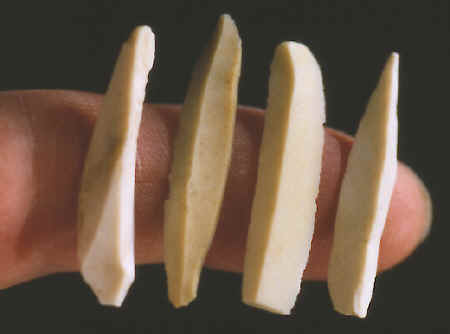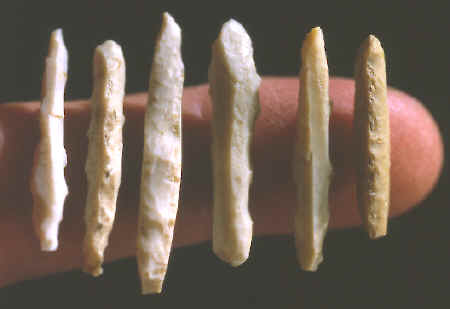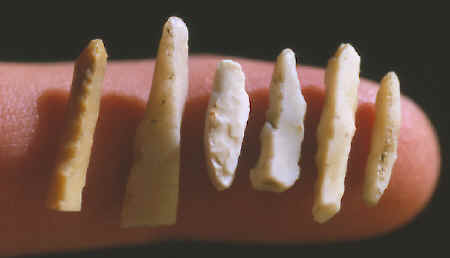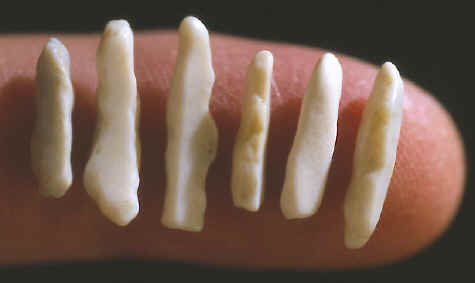|
||
|
One of the oldest beads ever found in North America was found on an 11,000 year old Folsom site in Texas. This site is called the Shifting Sand site and the very small Folsom bead was stuck to one of the stone flakes. |
||
|
Drills were used by primitive cultures around the world to manufacture beads. No other artifact production with hole making as a part of the process approaches the volume of drilling that must have been needed to make beads. Different drilling techniques and devices were probably developed and improved upon over the years as a direct result from so many cultures needing to produce so many beads. |
||
|
Late Stone Age cultures in the southwestern United States made the largest variety of intricately carved, cut, sawed, ground, filed and drilled pieces of jewelry and beads than anywhere else in North America. Around the turn of the century the Hyde expedition found 30,000 turquoise beads at Pueblo Bonito, New Mexico. |
||
|
In the central Mississippi Valley during the Late Stone Age, the Mississippian culture was manufacturing vast quantities of shell beads. Some of the different types of beads found in Mound 72 at the Cahokia Mounds State Historic Site in southern Illinois was disc beads, barrel beads, parallel-sided beads, tubular beads, round-sided beads and seed beads. |
||
| CONTINUE ON TO PAGE THREE | ||
|
"REFERENCES"
1896,
"A Study of the Primitive Methods of Drilling", by J.D. McGuire,
pp. 707, 721, 734, 737. |
||




